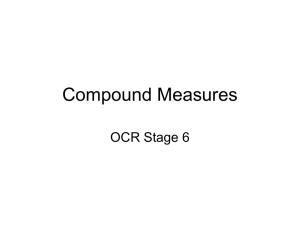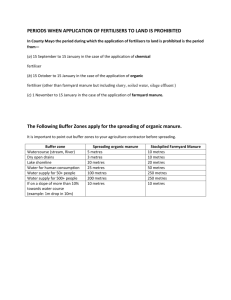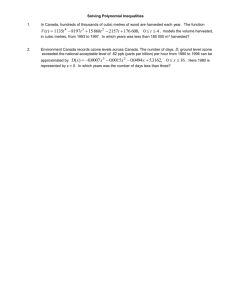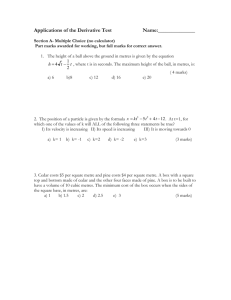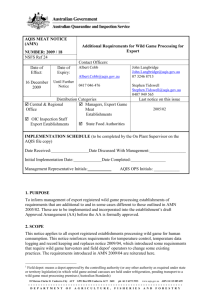Site selection - Department of Agriculture and Food
advertisement
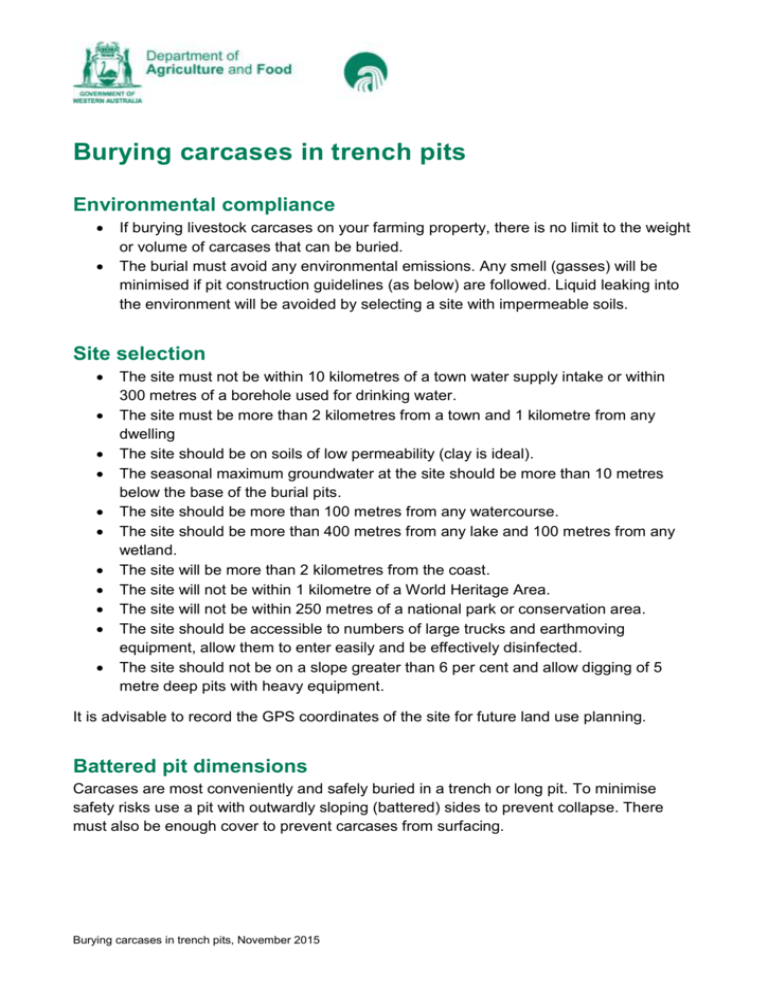
Burying carcases in trench pits Environmental compliance If burying livestock carcases on your farming property, there is no limit to the weight or volume of carcases that can be buried. The burial must avoid any environmental emissions. Any smell (gasses) will be minimised if pit construction guidelines (as below) are followed. Liquid leaking into the environment will be avoided by selecting a site with impermeable soils. Site selection The site must not be within 10 kilometres of a town water supply intake or within 300 metres of a borehole used for drinking water. The site must be more than 2 kilometres from a town and 1 kilometre from any dwelling The site should be on soils of low permeability (clay is ideal). The seasonal maximum groundwater at the site should be more than 10 metres below the base of the burial pits. The site should be more than 100 metres from any watercourse. The site should be more than 400 metres from any lake and 100 metres from any wetland. The site will be more than 2 kilometres from the coast. The site will not be within 1 kilometre of a World Heritage Area. The site will not be within 250 metres of a national park or conservation area. The site should be accessible to numbers of large trucks and earthmoving equipment, allow them to enter easily and be effectively disinfected. The site should not be on a slope greater than 6 per cent and allow digging of 5 metre deep pits with heavy equipment. It is advisable to record the GPS coordinates of the site for future land use planning. Battered pit dimensions Carcases are most conveniently and safely buried in a trench or long pit. To minimise safety risks use a pit with outwardly sloping (battered) sides to prevent collapse. There must also be enough cover to prevent carcases from surfacing. Burying carcases in trench pits, November 2015 Figure 1 Example of the dimensions of a battered burial pit (ignore lining) Dimensions required: 1.5 cubic metres (m3) per cow 0.3 m3 per pig or sheep Minimum depth of pit: 5 metres (m) Required depth of soil to cover carcases: 2m A pit 3 metres wide at the base, 5 metres wide at the top of the carcases, and 5 metres deep, filled with carcases to within 2 metres of ground level (see Figure 1) has an effective available volume of 12m3 for every linear metre. Using these dimensions, for each linear metre of trench 8 cattle or 40 sheep can be buried. The Chief Executive Officer of the Department of Agriculture and Food and the State of Western Australia accept no liability whatsoever by reason of negligence or otherwise arising from the use or release of this information or any part of it. © Western Australian Agriculture Authority 2015 Burying carcases in trench pits, November 2015
